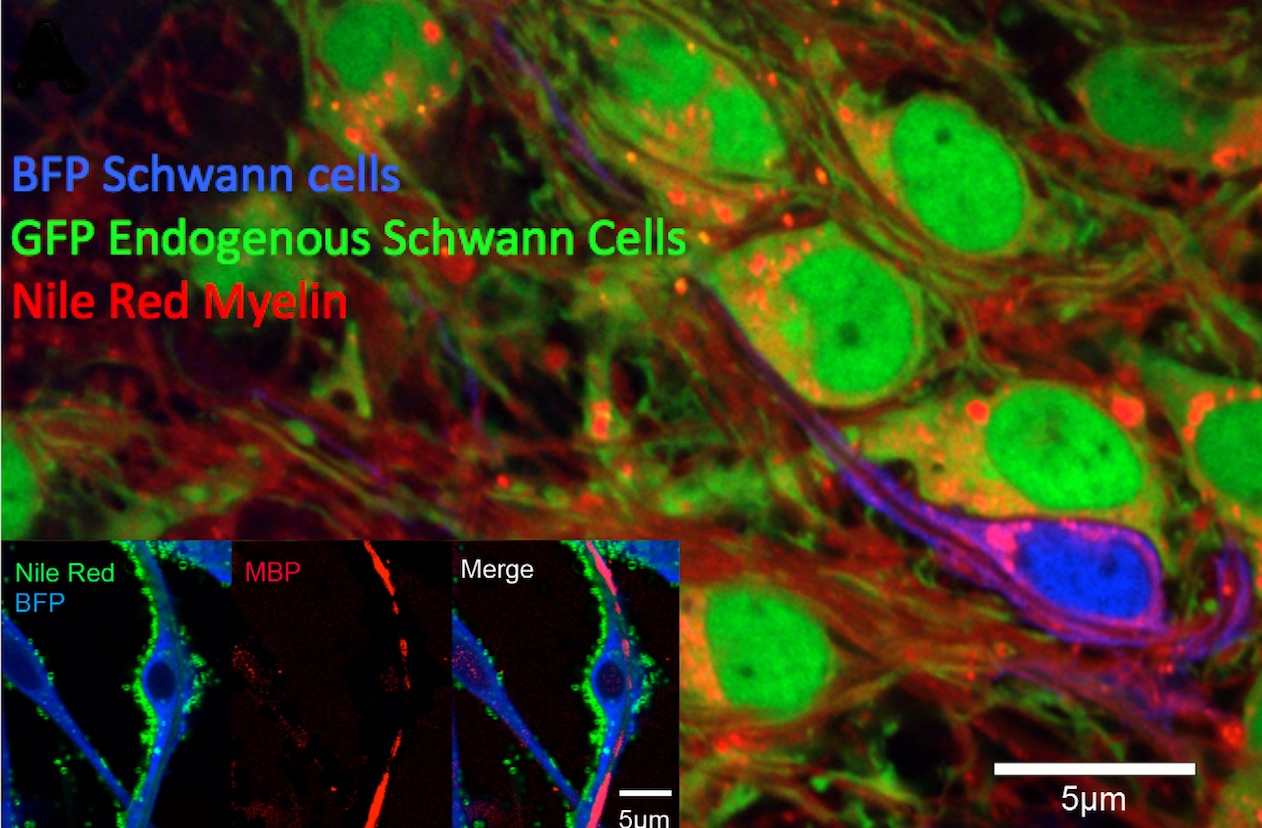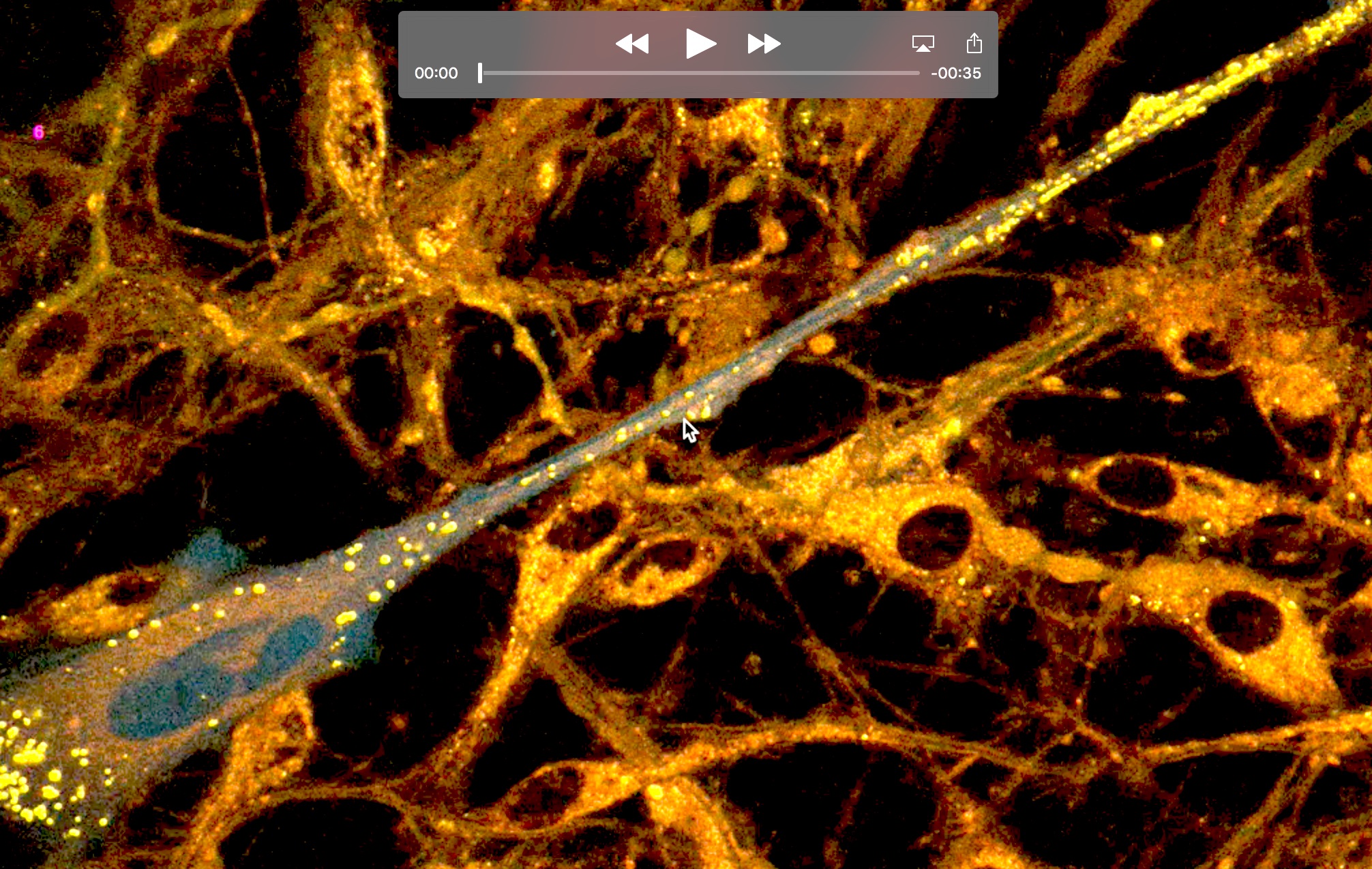Schwann cells transport lipid rich vesicles during in-vitro myelination as revealed by video lapse spectral imaging
Joey Kevin Grochmal, MD, PhD; Raj Midha, MD, MSc; University of Calgary, Calgary, AB, Canada
Introduction: Peripheral nerve myelin synthesis requires a large volume of hydrocarbon molecules to support the exponential production of lipid bilayer inherent in its formation; this provision occurs through a process that is yet unclear. Methods: Using spectral confocal microscopy, we studied exogenous BFP expressing Schwann cells as they progressively myelinated in GFP-DRG explant co-cultures (Figure 1: In-vitro myelination by exogenous BFP and endogenous GFP expressing Schwann cells, with myelin labelling by Nile Red. Exogenous Schwann cells produce myelin basic protein -inset).
Noticing lipid-rich Schwann cell domains by staining tissue living cultures with Nile Red, we then used time-lapse imaging to capture retrograde vesicular transport live in-vitro (Figure 2). 
Results: Schwann cells are observed to transport lipid-rich vesicles with a spectral signature indicative of extensive cholesterol content, in the context of elongated alignment with DRG neurites (Figure 2- Lipid vesicles in bright yellow, Schwann cell cytoplasm in blue with evident nucleus). These vesicles move in a retrograde fashion (at a speed similar to that of retrograde axonal transport) and appear to coalesce in the perinuclear area, consistent with incorporation into the Golgi and rough endoplasmic reticulum organelles. They also experience sudden changes in velocity, suggesting that these are actively transported vesicles rather that passively diffusing lipid microdomains. Conclusion: We provide initial evidence in support of active cytoplasmic transport by Schwann cells of lipid-rich vesicles, a phenomenon that may be a precursor to their use as building blocks in myelination.
Back to 2018 Program
